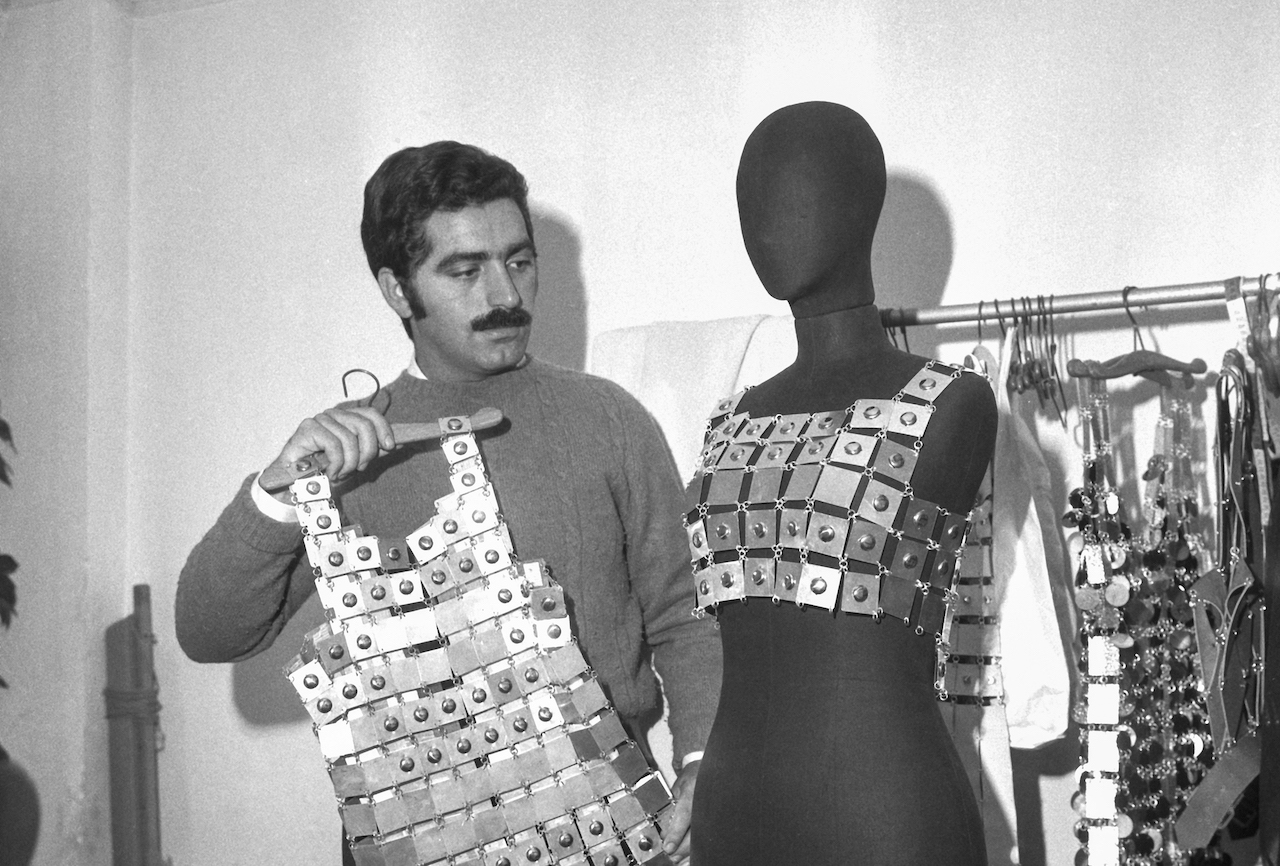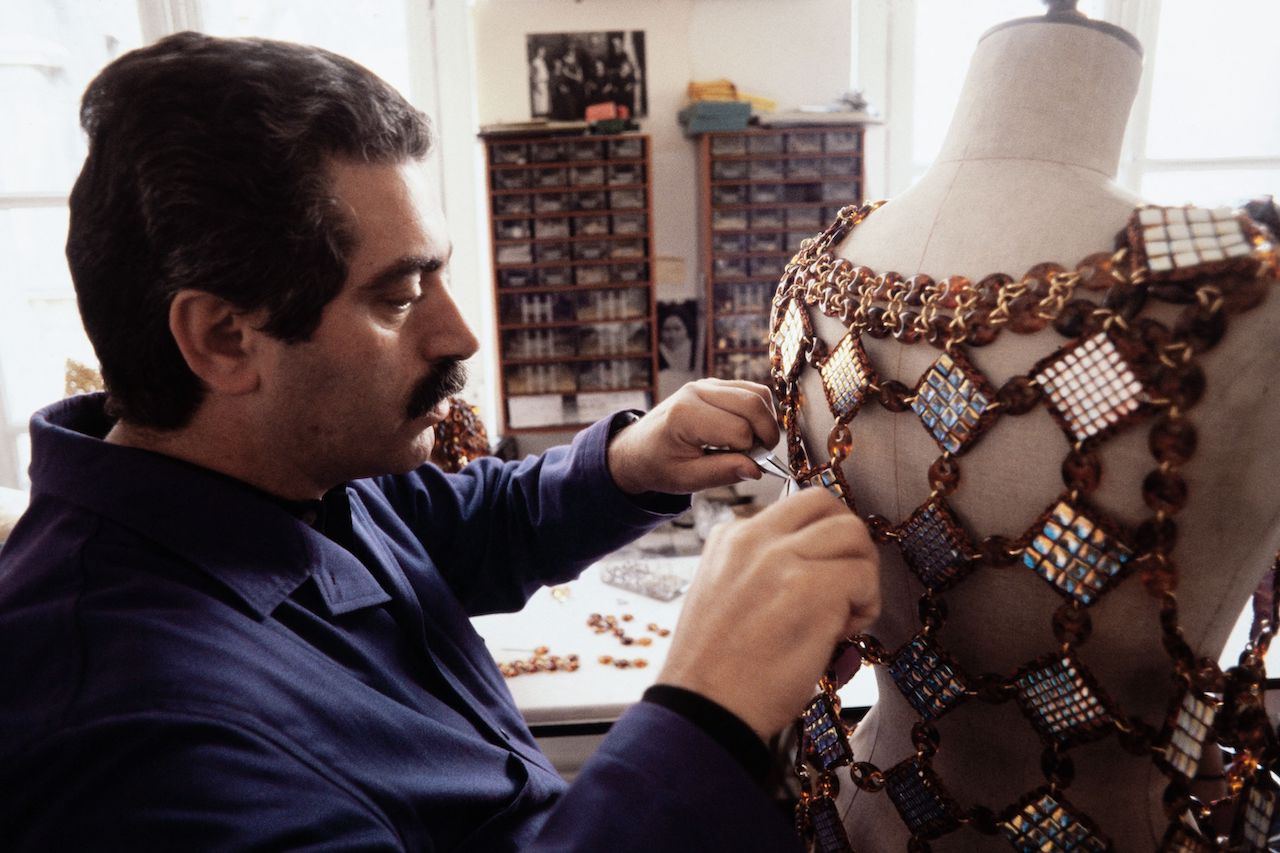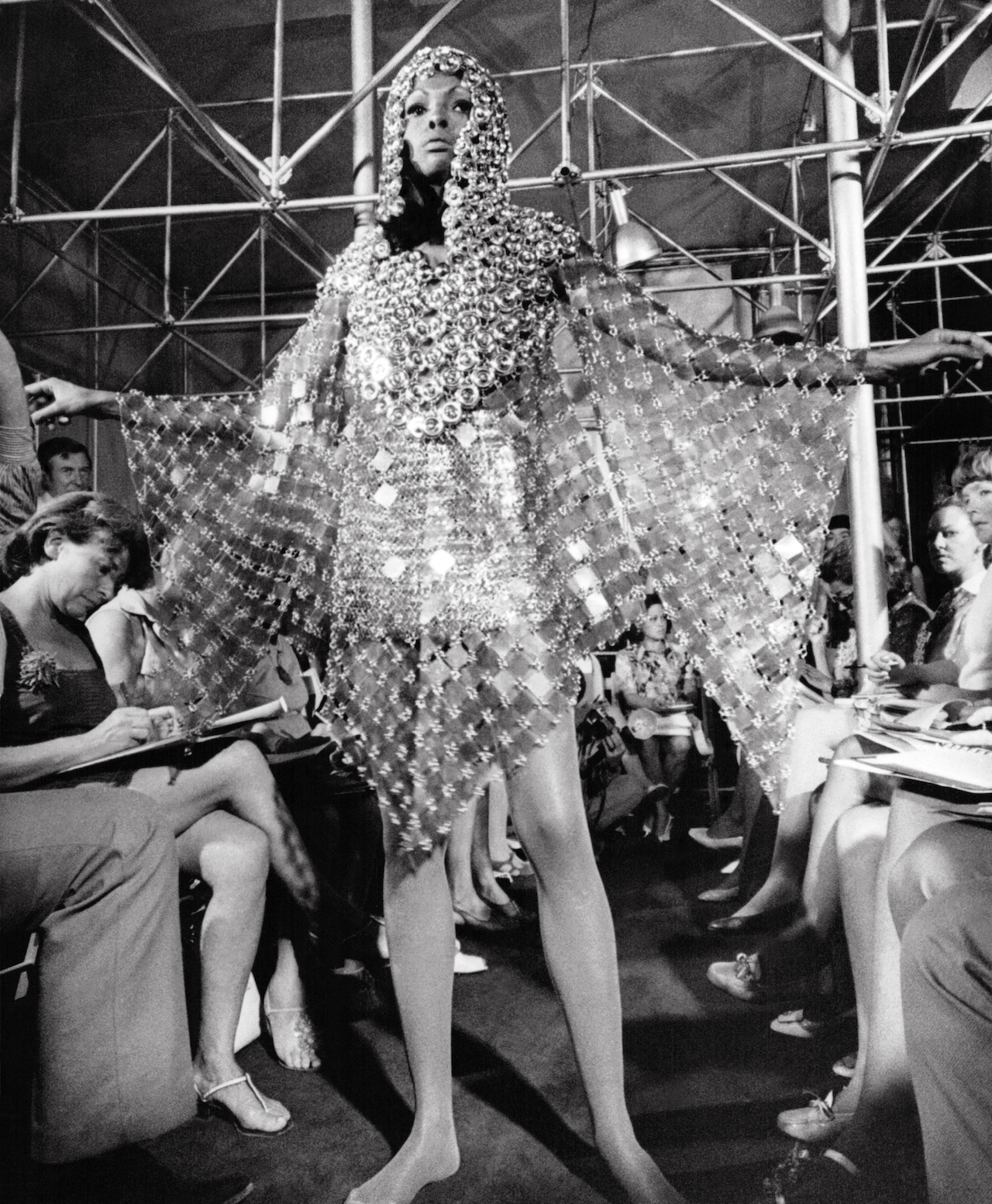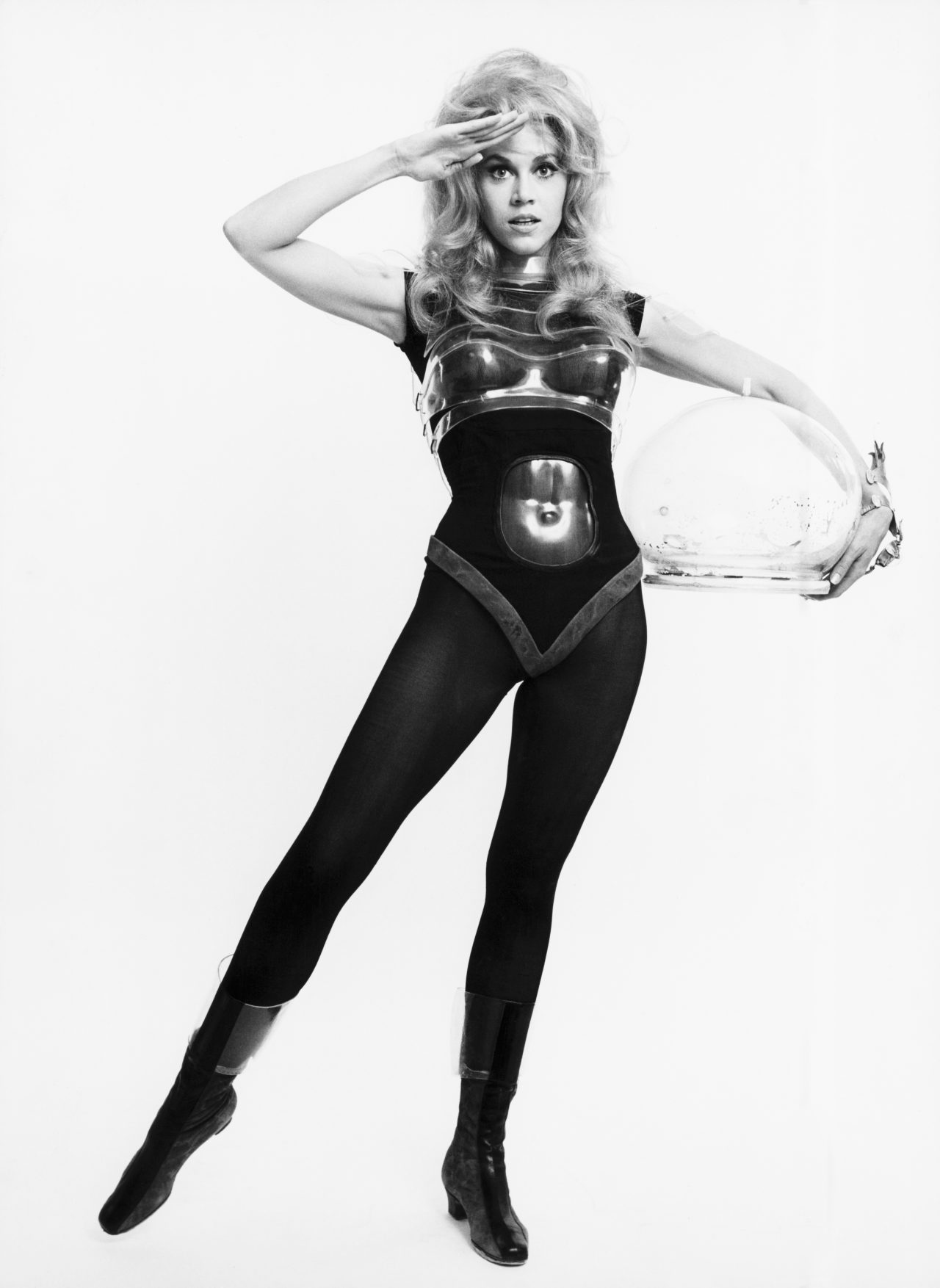

Legendary fashion designer Paco Rabanne has died, his brand and parent company Puig confirmed in a statement. According to his namesake label, the pioneering Spanish designer passed away at the age of 88 on Feb. 3.
“The House of Paco Rabanne wishes to honor our visionary designer and founder who passed away today at the age of 88,” the brand wrote. “Among the most seminal fashion figures of the 20th century, his legacy will remain a constant source of inspiration. We are grateful to Monsieur Rabanne for establishing our avant-garde heritage and defining a future of limitless possibilities.”
“Paco Rabanne made transgression magnetic,” said the president of Puig’s fashion and beauty division, José Manuel Albesa per WWD. “Who else could induce fashionable Parisian women to clamor for dresses made of plastic and metal? Who but Paco Rabanne could imagine a fragrance called Calandre — the word means ‘automobile grill,’ you know — and turn it into an icon of modern femininity?”
He added, “That radical, rebellious spirit set him apart: There is only one Rabanne. With his passing, we are reminded once again of his enormous influence on contemporary fashion, a spirit that lives on in the house that bears his name.”

Born Francisco Rabaneda y Cuervo in 1934, the visionary and his mother (a seamstress for Cristóbal Balenciaga) moved to France as refugees from the Spanish Civil War of the 1930s. He went on to study architecture in Paris (a background prevalent in his design perspective), before crafting jewelry and buttons during his studies.
Rabanne later started designing clothes and went on to build a legacy in the fashion industry best known for his use of unconventional materials. In 1964 at age 30, he debuted his first show titled, “Twelve Experimental Dresses.” He followed it up in 1966 with his breakthrough collection “Twelve Unwearable Dresses,” which included mod-style dresses made from square and rectangular aluminum plates. His futuristic fashions pioneered the Space Age style of the Swinging ‘60s. Rabanne is credited alongside designers Pierre Cardin and André Courrèges for their Jetsons-adjacent aesthetics that defined the decade.
He also was one of the first designers to play music during his runway shows, and broke tradition again by casting models of color to model on the catwalk.

His best-selling perfumes also made him a house hold name after he released his first, Calandre, in 1969. His reach extended into the celebrity space too, becoming a fan-favorite of ‘60s style stars, from Françoise Hardy and Audrey Hepburn to collector Peggy Guggenheim. Rabanne even designed the intergalactic space-gear costumes for Jane Fonda in the 1968 sci-fi flick Barbarella.

Rabanne stepped back from fashion in 1999 but his brand lives on in the hands of its current creative director Julien Dossena, who expressed his gratitude for the founding designer on Instagram. “Thank you, Mr. Rabanne,” he wrote in French. “Thank you for being a couturier who defined a new modernity and accompanied a cultural revolution. A total artist who, through the expression of his personal utopia, has contributed to changing the vision of the world. Thank you for this legacy.”














